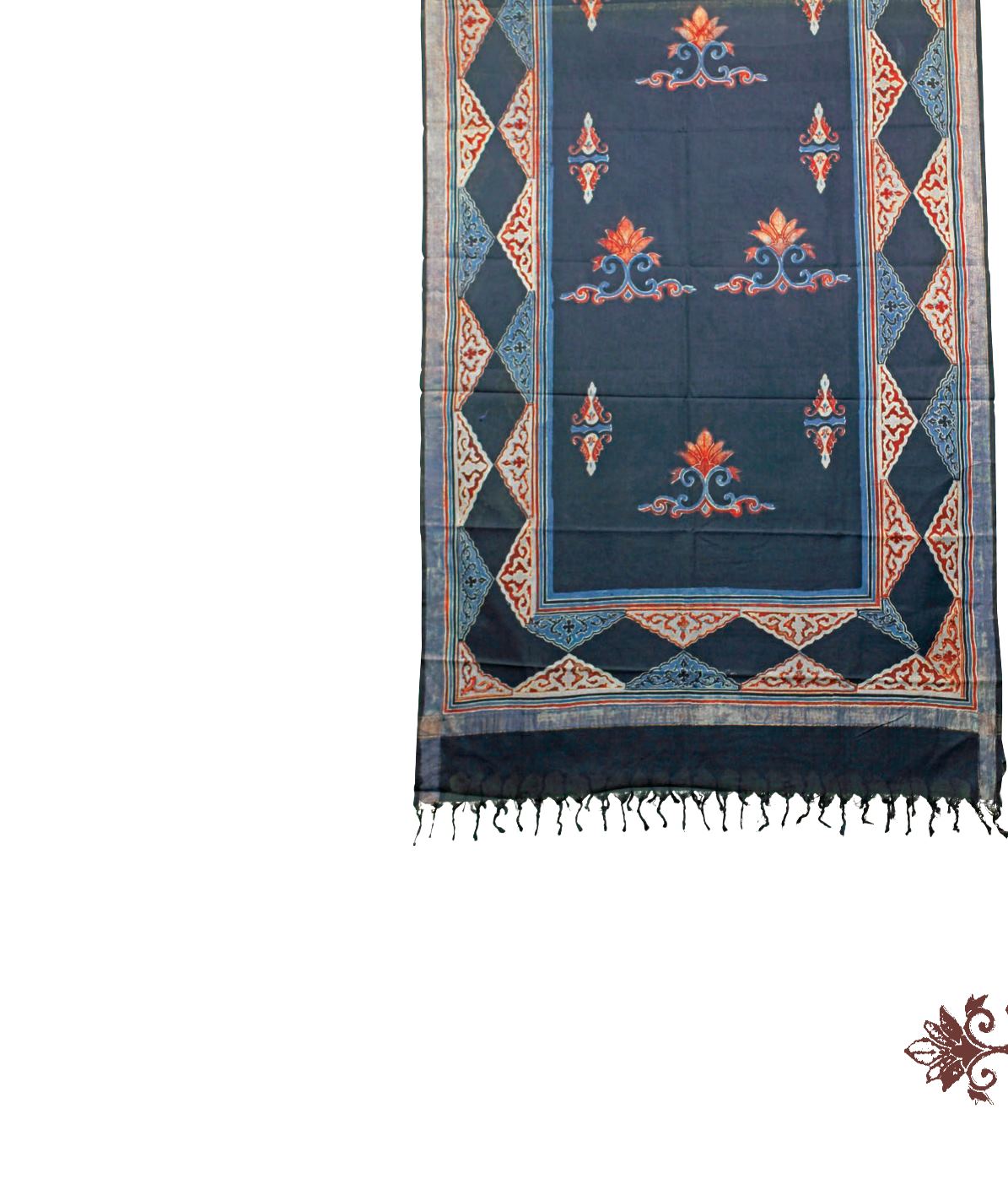
29
God and believed that there was a message for
us in this incident.
We went back to our work tables with renewed
energy to create textiles even better than the
ones that had been burnt. Paramparik Karigar
invited us to be a part of their family of
craftsmen. It was, and continues to be a great
platform where textile lovers and buyers come
in contact with genuine craftspersons. By
then Sarfaraz had completed his studies and
joined Pracheen. From a young age he enjoyed
playing with colours, mixing dyes and creating
different shades, and then printing motifs with
those dyes on tiny bits of cloth. He is skilled
at working with natural dyes as well as hand-
block printing. He is also good at interacting
with buyers and understands the requirements
of different clients and markets. He now looks
after the production as well as interacts with
potential buyers and designers.
We have since participated in several
exhibitions of Paramparik Karigar and the
response has been very encouraging. Our
creations have also been widely appreciated.
In the initial exhibitions we had to explain
natural dyes to buyers. Once they started
understanding the beauty of natural dyes and
how they are environment-friendly, the demand
for our textiles increased considerably. We also
supply products directly to designers and clients
including celebrities.
In 2005, I was deeply honoured to receive the
National Award for hand-block printing with
natural dyes. It encouraged us to continue
creating hand-block printed textiles with natural
dyes. Working with natural dyes is extremely
time-consuming when compared with using
synthetic dyes. Due to the time, labour and cost
of natural dyes, textiles printed with natural
dyes are expensive.
Stages of Evolution
Working with natural dyes is an extremely time-
consuming and labour-intensive process. We
source natural ingredients and extract colour
from them using different techniques such as
boiling, making a solution or making a paste.
The natural dyeing process commences with
00
treating the cloth by dipping it in a solution of
harda
and leaving
it to dry for three to four days during which time the cloth
absorbs the
harda
which penetrates it thoroughly. Then the
gud
that is the block for making the background colour is used if the
fabric has to take on a different colour in some sections or all
of it. Next, the outlines of motifs are made with lime resist, and
then the motifs are filled using different colours as per
the design.


